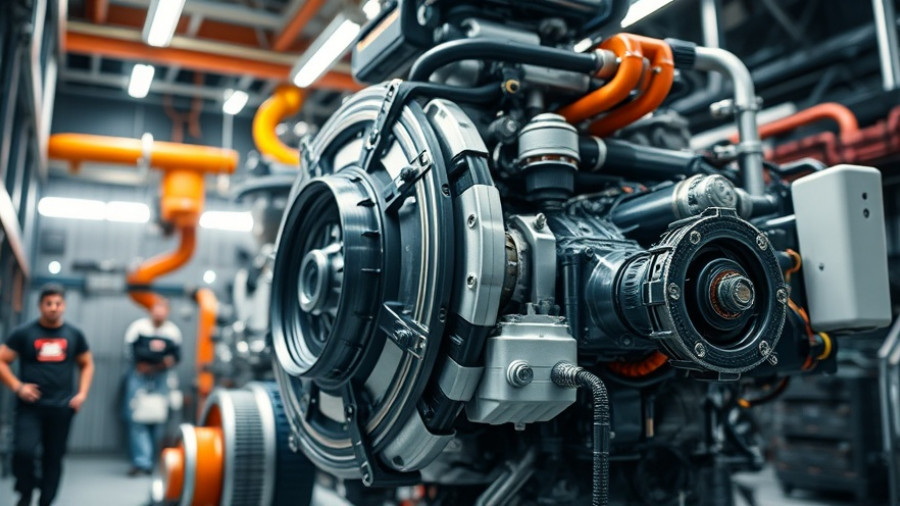
The Growing Role of Ammonia in Maritime Fuel
As the shipping industry grapples with the pressing need for cleaner fuels, ammonia has emerged as a potential game changer. In a recent publication, the American Bureau of Shipping (ABS) highlights critical safety insights related to the use of ammonia as a marine fuel, reinforcing its central role in the transition to sustainable maritime operations.
Understanding the Risks: Key Safety Insights from ABS
The ABS report titled “Safety Insights for Ammonia as a Marine Fuel” addresses fundamental safety questions that arise when using ammonia—a substance that presents unique challenges compared to more common fuels like diesel. Such insights include how ammonia behaves in leakage scenarios and the environmental effects of ammonia dispersion during bunkering operations. According to Vassilios Kroustallis, ABS’s senior vice president, the publication synthesizes extensive research into the practical implications of using ammonia on board vessels.
Innovative Analysis Techniques: The CFD Approach
To understand potential risks, ABS utilized computational fluid dynamics (CFD) simulations. These advanced simulations allow engineers to visualize how ammonia gases disperse in the event of leaks during various bunkering processes — whether ship-to-ship, terminal-to-ship, or truck-to-ship. By simulating these scenarios, ABS aims to identify risk areas and formulate appropriate safety protocols, marking a significant advancement in maritime safety.
Framework for Safe Ammonia Use: Best Practices
ABS presents a three-part framework for those considering ammonia as a fuel source:
- Proactive Regulatory Engagement: Engaging with regulatory bodies to anticipate risks associated with ammonia.
- Comprehensive Safety Framework Development: Combining both qualitative and quantitative assessments of risks.
- Real-Time Monitoring and Emergency Response: Deploying advanced technologies, such as acoustic cameras, to quickly assess and respond to ammonia leaks.
These practices are crucial to fostering a culture of safety and resilience in maritime operations as the industry increasingly shifts toward alternative fuels.
Ammonia vs. Conventional Fuels: A Comparative Insight
While diesel fuel has dominated the maritime industry, its environmental impact cannot be overlooked. According to a 2021 study by the International Maritime Organization, the shipping industry accounts for approximately 3% of global greenhouse gas emissions. Ammonia, on the other hand, offers a carbon-free alternative that could help reduce these emissions significantly — but only if its usage is managed safely.
The Road Ahead: Predicting the Future of Marine Fuel
As industries work to meet increasingly stringent regulatory standards aimed at combating climate change, ammonia's adoption could enrich the marine fuel landscape. With the insights provided by organizations like ABS, ship owners, and operators can better navigate the complexities surrounding ammonia usage. As safety measures evolve, the opportunity to leverage ammonia's potential becomes increasingly tangible.
Engaging Stakeholders for a Collective Effort
The transition to ammonia as a cleaner maritime fuel will not happen overnight. Engaging diverse stakeholders—from shipbuilders to regulatory agencies—is essential for ensuring the safe adaptation of this fuel source. Collaboration can foster innovation, leading to enhanced safety mechanisms and more efficient usage strategies.
Conclusion: Embracing Ammonia for a Sustainable Future
The maritime industry stands at a crucial crossroads. The insights presented by ABS underline the importance of stringent safety measures for ammonia's acceptance as a viable marine fuel. By adopting these recommendations, shipowners can contribute to a cleaner maritime environment while ensuring the safety of their operations. As the world transitions into a greener future, understanding and implementing innovative fuel solutions like ammonia may very well be the key to maritime sustainability.
 Add Row
Add Row  Add
Add 




Write A Comment